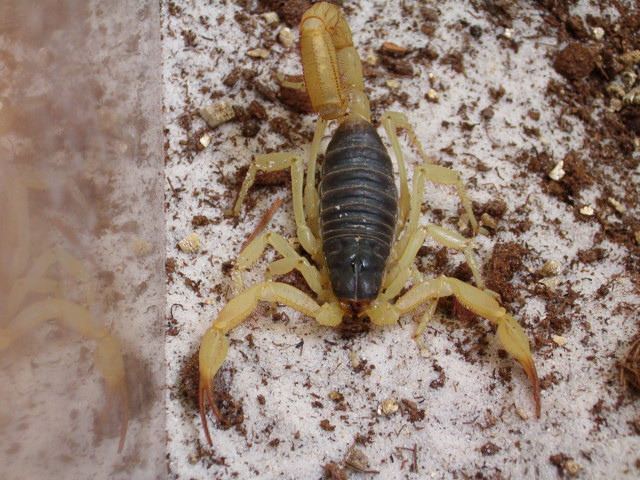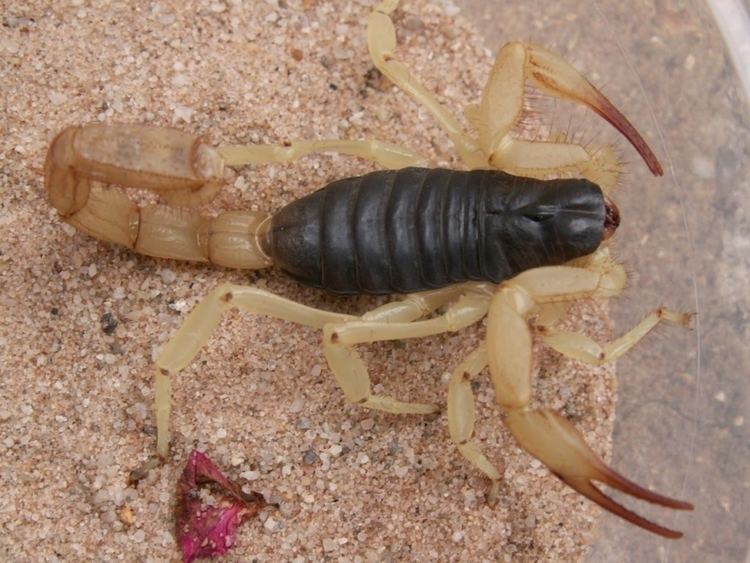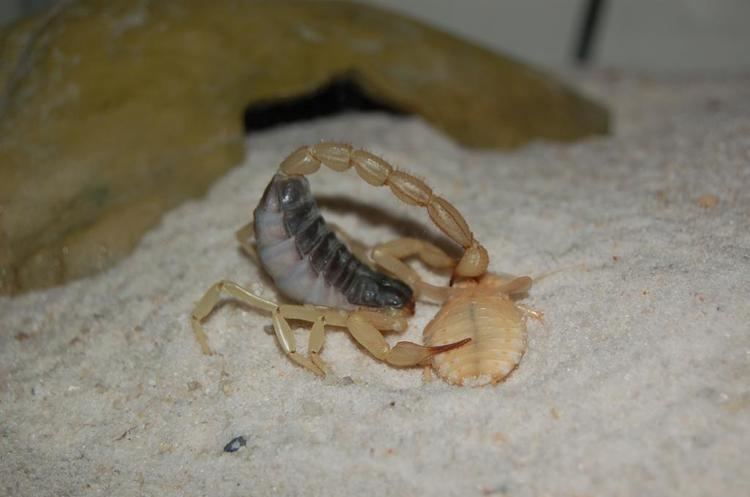Order Scorpiones | Rank Species | |
 | ||
Similar Hadrurus, Hadrurus arizonensis, Caraboctonidae, Hadogenes, Paruroctonus boreus | ||
Hadrurus spadix is a large (around 15 centimeters / 5.51 inches) scorpion native to the southern deserts of North America. It is a burrowing scorpion which spends a lot of time digging in the sand and enlarging its burrow. A similar species is the giant desert hairy scorpion.
Contents

Captive care

Hadrurus spadix can be housed in a big vivarium. A mixture of peat and sand should be used for substrate, though sand should be the major component. The substrate should be humidified in order to stabilize it and permit burrowing, then dried before introducing the scorpion in the vivarium. A rock or a piece of bark should be provided so the scorpion can dig its burrow under it. No water is needed in the vivarium and humidity should be quite low (30%) to prevent mycosis. Hadrurus spadix requires high temperatures, and do best at 30°C–35°C (86°F–95°F) during the day, with a sharp drop in temperatures (to 20°C (68°F)) during the night to mimic desert conditions. As with all scorpions, this species can be fed most types of small insects, though crickets remain the most common choice.
Behavior

Commonly known as the black-back scorpion, it can be differentiated from the giant desert hairy scorpion by its completely black prosoma or cephalothorax. This scorpion is quite nervous and can display aggressiveness towards its keeper. It should not be kept communally, as fights and cannibalism are frequent. The toxicity of its venom is usually deemed to be low, though its sting can be quite painful. This scorpion and its close relative Hadrurus arizonensis make good pets for a beginner, as they are quite large, very active and typically eat a lot.



